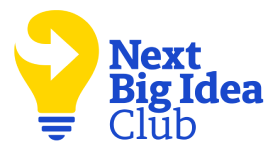Tamara Myles is a professor at Boston College, an instructor and researcher at the University of Pennsylvania, and consultant working with organizations to improve individual and team performance. Wes Adams is the CEO of SV Consulting Group where he works with Fortune 500s and scaling companies to build high performing teams and thriving organizations. He is also a researcher at the University of Pennsylvania where he studies the leadership practices and organizational structures that drive passion and performance. Together, they’ve spent years working with organizations like Microsoft, BlackRock, KPMG, and a range of scaling companies to help leaders increase performance, engagement, and innovation.
What’s the big idea?
The best burnout prevention, retention remedy, and workplace satisfaction guarantee comes down to meaning. Without feeling directly connected to the meaning behind a job, and without feeling seen for their contributions, people disengage and stagnate. Growth and innovation rely on leaders’ ability to build teams that know and feel their worth, individually and as a unit. When leaders specifically cultivate Community, Contribution, and Challenge, they ignite passion and performance in every employee.
Below, co-authors Tamara Myles and Wes Adams share five key insights from their new book, Meaningful Work: How to Ignite Passion and Performance in Every Employee. Listen to the audio version—read by Tamara and Wes—in the Next Big Idea App.
1. Every job can, and should, be meaningful—and leaders make that happen.
Meaning at work isn’t just for people who have jobs at nonprofits or in helping professions. Your job doesn’t have to be your life’s calling for work to feel worthwhile. Moments of meaning can happen in every job, every day—moments that drive passion, performance, and wellbeing.
Today’s talent marketplace shows that meaning is on everyone’s mind. Nine out of 10 people are willing to earn less money for a more meaningful job. Lack of meaning is the biggest reason people quit (or quietly quit), while those who believe their work is meaningful are seven times more engaged, 64 percent more satisfied with their jobs, and 69 percent less likely to leave.
Our book introduces the Three C’s of Meaningful Work—Community, Contribution, and Challenge—and shows how small shifts from leaders can create powerful moments that inspire people to do their best work.
We often think of meaning as a personal pursuit, but leaders have more influence on meaningful work than we realize. Our research found that nearly half of an employee’s experience of meaning at work comes from what leaders say, do, and prioritize.
The most effective leaders don’t leave meaning to chance. They design work environments where people feel connected, understand their impact, and have opportunities to grow. We often think meaning comes from big achievements or major career milestones, but meaning doesn’t have to come from big accomplishments. Small, everyday moments that make employees feel valued, recognized, or connected can ignite passion and performance. Think about a moment when:
- A manager took the time to ask how you were really doing or inquired about your weekend.
- A colleague thanked you for something you didn’t think anyone noticed.
- A mentor challenged you to take on something just outside your comfort zone.
- A customer or client told you how your work made a real difference.
These moments are intentionally shaped by leaders to create workplaces where meaning is visible, and employees are valued. When work feels meaningful, then motivation, engagement, and innovation follow.
2. Hidden networks of support make workplaces strong.
At first glance, a forest may look like individual trees growing side by side. But beneath the soil, their roots are interconnected, forming a vast underground network that shares nutrients and signals distress. Scientists call this a superorganism, and it’s the secret to a thriving ecosystem. The best workplaces operate the same way. These organizations aren’t just groups of high performers; they are what we call superorganizations, meaning interconnected systems where people feel supported, valued, and connected. Research shows that employees who feel deeply connected at work are 92 percent more likely to develop professionally and 34 percent more likely to reach their goals.
“A brief moment of support, even something as small as offering help on a project, signals that people are not alone.”
Strengthening these invisible networks doesn’t require grand gestures. It only takes 40 seconds. A simple check-in at the start of a meeting—“What’s something important happening in your life outside of work?”—can transform how people feel about their work. A sincere “thank you” tied to a specific action helps someone feel acknowledged. A brief moment of support, even something as small as offering help on a project, signals that people are not alone. These everyday interactions, though small, foster the psychological safety and trust that make teams stronger.
When people feel seen, they thrive. When people thrive, so does the entire organization. The hidden power of superorganizations isn’t just in big initiatives or formal programs—it’s in the micro-moments of connection that leaders create every day. These moments add up, fostering a sense of community and shaping a culture where people flourish.
3. Contribution fuels engagement, but only if people see their impact.
People don’t burn out from hard work—they burn out from working hard without feeling that their efforts matter. The most engaged employees are the ones who can draw a direct line between their work and its positive impact on coworkers, customers, and larger organizational goals.
The problem is that most employees don’t see that connection on their own. Less than 40 percent of employees believe they are adequately recognized for their contributions. Without regular, meaningful feedback, people start feeling invisible, and when they do, performance and retention suffer.
“People don’t burn out from hard work—they burn out from working hard without feeling that their efforts matter.”
Positive feedback is one of the most powerful tools leaders have to reinforce contribution. But not all feedback is equal. Vague praise like “great job” is forgettable. Specific recognition that ties someone’s actions to a larger impact is transformative. When a leader says, “Thank you for all your hard work on this project. Because of you, we were able to secure funding that will help thousands of people,” they are doing more than giving feedback—they are drawing a direct line between an employee’s work and its larger impact. These moments shape whether someone feels like a cog in the machine or an integral part of something bigger.
Recognition is a critical performance driver. Without positive feedback, employees are 74 percent more likely to leave within a year. But just one genuine “thank you” each week from a manager is enough to cut disengagement in half.
4. Growth happens in the Zone of Possibility.
The best work experiences don’t come from playing it safe or pushing to the brink of burnout. They happen in what we call the “Zone of Possibility”—that sweet spot between comfort and overwhelm where people feel stretched but supported, challenged but capable.
When work is too easy, people disengage. When it’s too hard, they shut down. But when leaders set expectations just beyond someone’s current abilities and provide the right support, employees experience real growth—and with it, deeper engagement, confidence, and motivation.
This is where meaning-driven leaders make the difference. They see someone’s potential before that person sees it in themselves. They create environments where pushing and supporting happen simultaneously. They place one hand on your back, propelling you forward, and the other under your arm to steady you as you navigate the trickiest terrain. Think about a time when:
- A leader gave you a responsibility you weren’t sure you were ready for but then helped you succeed.
- You took on a challenge and, in the process, became a stronger, more capable version of yourself.
- Someone’s belief in you changed what you believed about yourself.
These aren’t just moments of professional growth. They are moments of meaning.
5. Meaning starts before day one.
People don’t start looking for meaning on their first day; they begin searching for it the moment they consider joining your team. Our research shows that the way in which leaders hire and onboard employees has a long-lasting impact on how meaningful their work becomes.
Meaning-driven leaders recognize that hiring is about welcoming someone into a culture where they can thrive. Candidates are searching for a place where they belong, where their contributions will matter, and where they will have room to grow. Once they accept the job, their first experiences shape how engaged and connected they feel over the life of their employment.
This is where meaningful onboarding makes all the difference. The best organizations create an experience that builds connection and cultural alignment from day one. Leaders can focus on a few key elements to create a meaningful beginning:
- Cultural Mastery: Instead of throwing people into the deep end, help them understand the organization’s mission, its values, and why their work matters by sharing real stories of how those things come to life.
- Authentic Relationship Building: The best workplaces don’t leave connections to chance. By introducing new hires to mentors, peers, and key leaders, you help them feel seen and supported from the start.
- Meaningful First Days: A new employee’s first tasks should feel meaningful, not just administrative. By setting them up with a quick win that has a clear impact, you can highlight the ways that their work matters to the organization.
When hiring and onboarding are intentionally meaningful, people feel valued before they even step through the door. That feeling of meaning compounds over time, fueling engagement, loyalty, and high performance.
Meaningful work isn’t a perk—it’s a critical performance driver. It’s time to build workplaces where people don’t just show up; they light up.
To listen to the audio version read by co-authors Tamara Myles and Wes Adams, download the Next Big Idea App today:










